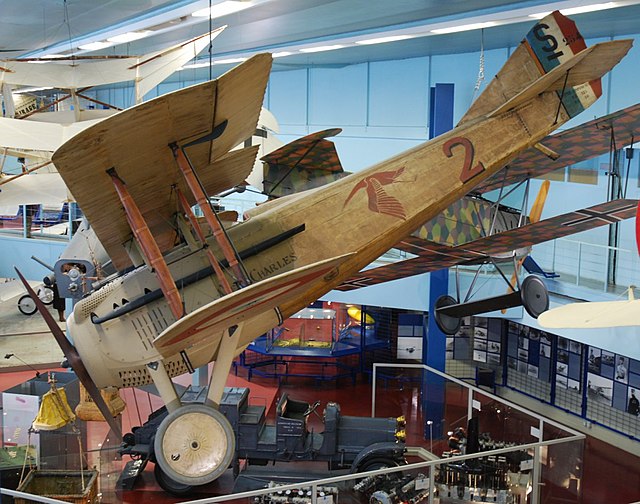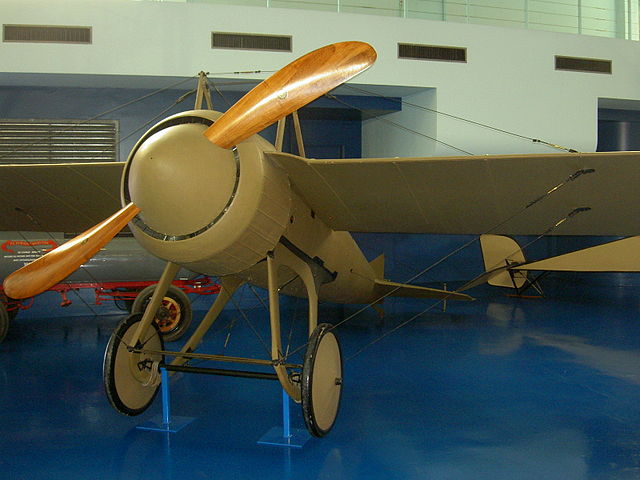The SPAD S.VII was the first of a series of highly successful biplane fighter aircraft produced by Société Pour L'Aviation et ses Dérivés (SPAD) during the First World War. Like its successors, the S.VII was renowned as a sturdy and rugged aircraft with good climbing and diving characteristics. It was also a stable gun platform, although pilots used to the more maneuverable Nieuport fighters found it heavy on the controls. It was flown by a number of the famous aces, such as France's Georges Guynemer, Italy's Francesco Baracca and Australia's Alexander Pentland.
SPAD S.VII
Both the S.VII and S.XIII shared the exposed aileron bellcrank as part of its control linkage, with the "pulpit" style A.2 (top)
An original SPAD S.VII at the Musée de l'Air et de l'Espace, once flown by Georges Guynemer in World War I
SPAD VII at Vadelaincourt in 1917
Société pour l'aviation et ses dérivés
SPAD was a French aircraft manufacturer active between 1911 and 1921. Its SPAD S.XIII biplane was the most produced French fighter airplane of the First World War.
Original Typea A Deperdussin monoplane from the Shuttleworth Collection
Deperdussin Monocoque at the Musée de l'Air et de l'Espace.
SPAD S.A.2
SPAD VII taking off








